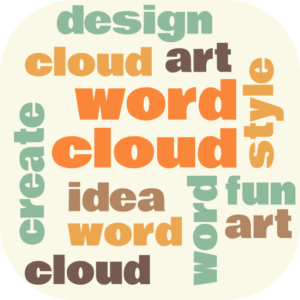Word clouds have become a popular visual tool that can be utilized in various fields, including education. These captivating word visualizations can be a powerful asset for teachers and educators to engage students, promote creativity, and enhance learning outcomes. In this article, we will explore how teachers and educators can make the most of word clouds in their daily teaching practice.
1. Vocabulary Enhancement
Word clouds are an excellent tool for reinforcing vocabulary acquisition. Teachers can create word clouds using relevant keywords from a particular text or topic and display them in the classroom. This visual representation can provide students with a visual reference of important words, helping them to understand and remember key terms more effectively.
Word clouds can also be used to introduce new vocabulary by generating word clouds related to the upcoming lesson or unit. This can spark interest and curiosity among students, encouraging them to explore and discover the meanings of the words displayed in the cloud.
2. Visualizing Concepts and Themes
Complex concepts, themes, or even historical events can often be challenging for students to grasp. Word clouds offer a visually appealing way to break down such concepts into manageable parts.
For example, let’s say the class is studying the American Revolution. The teacher can create a word cloud using relevant terms related to this historical event, such as “Independence,” “Colonies,” “Taxation,” and “Revolt.” By visually representing these keywords, students can easily identify the main themes and concepts associated with the American Revolution. This visualization can help students make connections and understand the significance of different elements.
3. Brainstorming and Idea Generation
Word clouds are a fantastic tool for promoting brainstorming and idea generation. They can be used to spark creativity and encourage students to think outside the box. Teachers can prompt students with a topic or question and ask them to come up with as many related words or ideas as possible.
Once students have generated their ideas, these can be used to create a word cloud. This visual representation of their collective thoughts can serve as a valuable reference point throughout the project or discussion.
4. Assessment and Evaluation
Word clouds can be utilized as an innovative assessment tool. Teachers can ask their students to create word clouds related to specific books or a specific topic they have studied. By analyzing the word cloud, teachers can gain insights into students’ understanding of the subject matter, identify areas of strength, and pinpoint areas that require further clarification.
Additionally, word clouds can be used as a form of self-assessment. Students can create word clouds to summarize their understanding of a lesson or unit. This process encourages reflection, critical thinking, and synthesis of information.
Why WordCloud.app?
WordCloud.app is the ideal tool for teachers and educators looking to incorporate word clouds into their teaching practice. With a user-friendly interface, a vast library of shapes, colors, and fonts, and the ability to upload custom images, WordCloud.app offers endless possibilities for creativity and customization.
The app also provides convenient features such as the ability to create word clouds directly from web pages or books, making it effortless for educators to analyze content and generate word clouds related to specific texts. Furthermore, integration with popular tools like Figma and Miro ensures seamless workflow and compatibility with existing teaching resources.
By integrating WordCloud.app into their teaching practice, teachers and educators can harness the power of word clouds to enhance student engagement, foster creativity, and facilitate a deeper understanding of concepts and ideas.
Start using WordCloud.app today and unlock the potential of word clouds in your classroom!

